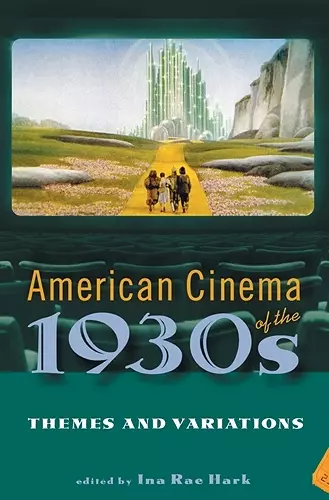American Cinema of the 1930s
Themes and Variations
Format:Paperback
Publisher:Rutgers University Press
Published:21st Jun '07
Currently unavailable, and unfortunately no date known when it will be back

Probably no decade saw as many changes in the Hollywood film industry and its product as the 1930s did. At the beginning of the decade, the industry was still struggling with the transition to talking pictures. Gangster films and naughty comedies starring Mae West were popular in urban areas, but aroused threats of censorship in the heartland. Whether the film business could survive the economic effects of the Crash was up in the air. By 1939, popularly called "Hollywood's Greatest Year," films like Gone With the Wind and The Wizard of Oz used both color and sound to spectacular effect, and remain American icons today. The "mature oligopoly" that was the studio system had not only weathered the Depression and become part of mainstream culture through the establishment and enforcement of the Production Code, it was a well-oiled, vertically integrated industrial powerhouse.
The ten original essays in American Cinema of the 1930s focus on sixty diverse films of the decade, including Dracula, The Public Enemy, Trouble in Paradise, 42nd Street, King Kong, Imitation of Life, The Adventures of Robin Hood, Swing Time, Angels with Dirty Faces, Nothing Sacred, Jezebel, Mr. Smith Goes toWashington, and Stagecoach .
“There is nothing like this series. Screen Decades firmly situates American cinema in the realms of material culture, popular culture, cultural narrative, reception analysis, and industrial history.”
* American Quarterly *“There is nothing like this series. Screen Decades firmly situates American cinema in the realms of material culture, popular culture, cultural narrative, reception analysis, and industrial history.”
* American QuarterISBN: 9780813540825
Dimensions: 235mm x 156mm x 18mm
Weight: 454g
296 pages